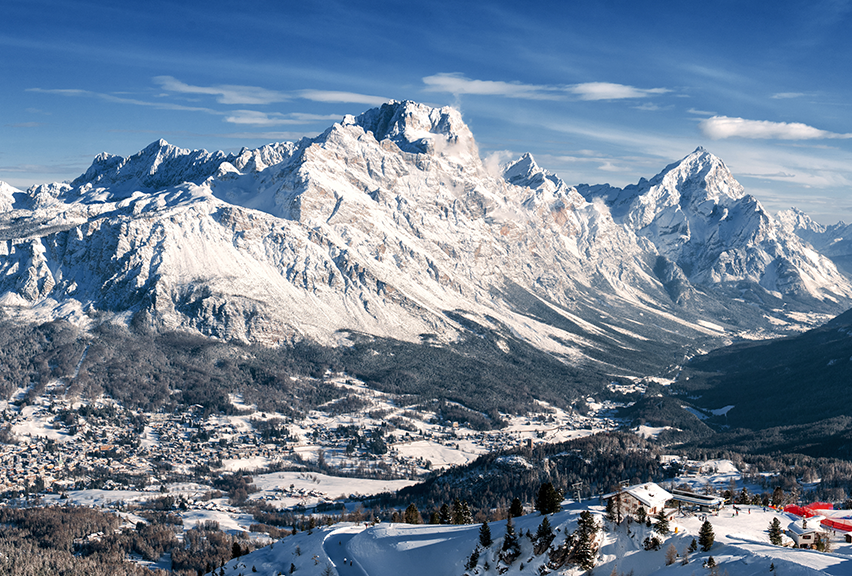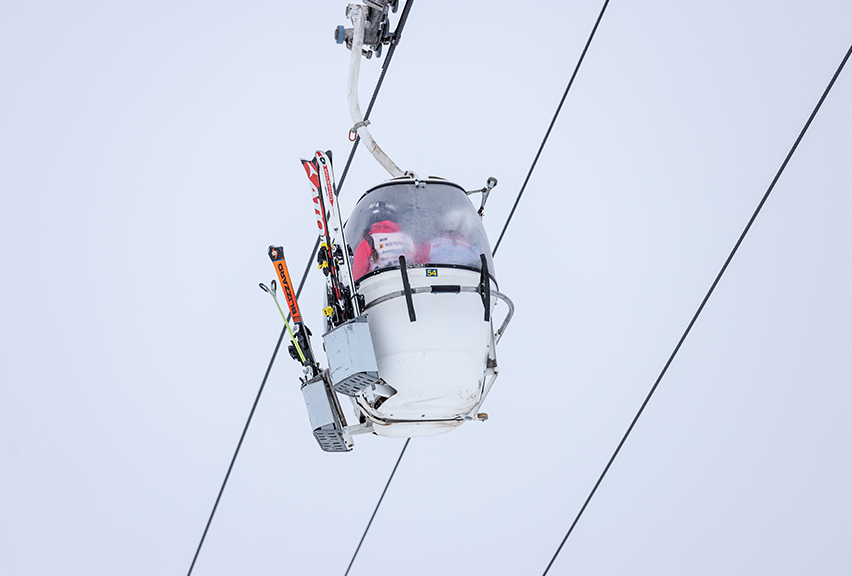Italy preps for the Winter Olympics

In 2026 all eyes will be focused on Italy (and, more specifically, Milan and Cortina d’Ampezzo) for the Winter Olympics.
Bormio will be the setting for a really historic moment as ski mountaineering makes its debut at the Games. The resort will also host some Alpine skiing events on the epic Stelvio slope, which is considered one of the most technically challenging in the world and has become an important annual stop on the ski racing circuit.
We also had news on the host cities for the next couple of Winter Olympics. The French Alps will host in 2030, with La Plagne, Montgenèvre and Serre Chevalier all hosting events.
And in 2034, the Games will be heading to Salt Lake City, Utah.
New and Improved Infrastructure

Resorts are always looking to invest in their infrastructure to improve skiers’ experience, beat the competition and become more environmentally friendly (particularly as the impact of climate change is beginning to cause serious concerns in the winter sports industry).
Let’s take a look at some of the headline developments in our fave school ski resorts.
French Ski Resorts
La Plagne
La Plagne has been a flurry of activity in recent months. The new Aérolive Experience perhaps is one of the most exciting.
Two new cabins have been added to the Glaciers gondola. No, not just any old cabins – these are completely open-air (passengers will be strapped in via a safety harness) with slatted floors and no glass barriers, giving you incredible 360° views of the mountains.
Now, we wouldn’t recommend taking your students in one of the open-air cabins (can you imagine the paperwork?) but you can ride in one of the normal cabins to the summit where you’ll find a panoramic terrace and cafe at 3,000m.
A couple of hundred metres lower down the mountain at Roche de Mio, there’s also a new heated picnic room, ‘Le Lounge’. Also boasting panoramic views, the room’s lovely, light and modern with comfy furniture so it’s the perfect place to warm up and refuel.
And in June 2024, the resort was awarded the Flocon Vert, highlighting its green credentials. The Flocon Vert is a label designed to promote French tourist destinations that are committed to sustainable development in the mountains. Basically, it’s a scheme to help tourists quickly identify resorts that are committed to creating a more sustainable and accessible environment for all.
To qualify for the Flocon Vert, La Plagne implemented a number of initiatives including improving the energy efficiency of buildings and ski lifts in the resort, overhauling waste management and developing a robust recycling programme, and several measures to conserve water and protect local wildlife.
A huge congratulations to our friends in La Plagne for such an incredible effort and great achievement.
Les 2 Alpes
Les 2 Alpes will unveil the brand new Jandri 3S lift on 17th January. This new ski lift will replace the Jandri Express gondola, which was originally installed in 1985.
Its installation will almost double capacity and massively shorten journey times (you’ll be able to go from 1650m to 3200m in just 17 minutes – it currently takes 40).
And the lift will be far more reliable when the weather (especially the wind) is bad, thanks to its tri-cable suspension.
The cabins themselves will boast large picture windows, ergonomic seats for 24 people and 8 standing places. And with wide doors and spaces for wheelchairs and pushchairs, they’ll be much more accessible.
As well as the installation of this new lift, the resort has invested in the facilities at the departure, mid and top stations.
The departure area will boast airport-like facilities with toilets, extensive support services and practical additions like garages for the grooming machines. The mid-station will have a comfortable area where skiers and non-skiers can enjoy a hot drink. And the top station will boast a restaurant with a panoramic terrace and an area with facilities for ski clubs and federations training on the glacier.
Serre Chevalier
The resort of Serre Chevalier has been chosen to host half-pipe skiing and snowboarding, mogul skiing and freestyle skiing at the 2030 Winter Olympics. Thanks to this, the resort will be undergoing a series of initiatives to improve the facilities and infrastructure ahead of the Games.
One of the biggest initiatives will be the improvement of road and rail links between Marseille and Briançon, cutting the journey time down from 5 hours to just 3.
A new covered carpet lift will be installed in the beginner area of the Méa, which itself was only unveiled last winter. This new carpet lift will mean beginners can safely reach the gentle slopes of the Mée plateau, where they can get to grips with the basics. This high-altitude beginners’ area is part of the resort’s attempt to adapt to the realities of climate change, ensuring good snow conditions for learners without having to rely on artificial snow.
Les Arcs
The iconic Transarc lift has had a massive refurb. It’ll now take you just 13 minutes from Arc 1800 to the top slopes (it used to take 20 minutes). There’ll also be 138 cabins, compared to 92 previously, which will really speed up the rate at which skiers can get around.
The new cabins are much more comfortable too – they’re much more spacious and can now seat 10 people.
The new Transarc lift also boasts much lower electricity consumption than its predecessor. In fact, Les Arcs is taking sustainability very seriously and spring 2025 will see the start of a new hydroelectric production project that will aim to provide nearly 14% of the area’s annual electricity consumption.
Italian Ski Resorts
Vialattea
As you probably already know, one of our absolute fave ski areas for schools is the Vialattea in Italy (after all, it’s where we’ve chosen to host the ISSC for the last couple of years).
The ski area has recently released a report highlighting the fact that climate change is causing colder periods to be shorter, which in turn means that resorts need to invest in and modernise their snowmaking capabilities.
There is, for example, a long-term project already underway in Sestriere to renovate the snowmaking network. It’s going really well (quicker than they expected, actually) and they’ve already replaced 16,500m of lines. So, from this coming winter, snow can be made in both the Alpette and Banchetta areas at the same time, meaning there’ll be snow-covered slopes even in the lower altitudes of the Borgata area.
The ski area is conscious of the reason that they need to carry out this work though and have prioritised sustainability so that now 100% of the electricity used in the Vialattea comes from renewable energy (e.g. hydroelectric, solar, wind and geothermal).
Works have also been carried out to improve the connection between Sestriere and Sauze d’Oulx.
Austrian Ski Resorts
Ziller Valley
Austria’s known for its unrivalled infrastructure, so it’s not surprising to find lots of work going on in Austrian resorts to keep them on top of their game. Ziller Valley is no exception, with two new lifts opening this winter.
The first to tell you about is the new Teufaltal chairlift. This new 8-seater lift replaces the old 4-seater, speeding up the connection between Zell am Ziller and Gerlos. It’ll also be more comfortable than the old lift, with a canopy to protect skiers against the elements and heated seats. Plus, with higher capacity, you’ll spend less time queuing in the cold.
The resort is also replacing the 32-year-old Duxeralmbahn 4-seater chairlift and replacing it with the 6-seater Duxer X-Press. Like the Teufaltal chairlift, this one will also have heated seats and a weather protection hood.
Saalbach-Hinterglemm
This winter the 12er NORD cable car is set to open in Saalbach-Hinterglemm. This 10-person monocable gondola will replace the old cable car with standing gondolas, offering a much more comfortable ride and greater capacity – 2,600 people per hour will be whizzed up the mountain.
Summary
We hope this little round-up of what’s new has helped to get you excited about hitting the slopes this season. If you would like further help, please get in touch to discuss a ski trip for your school group.